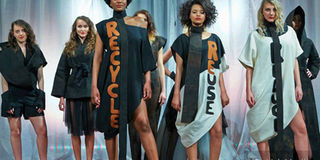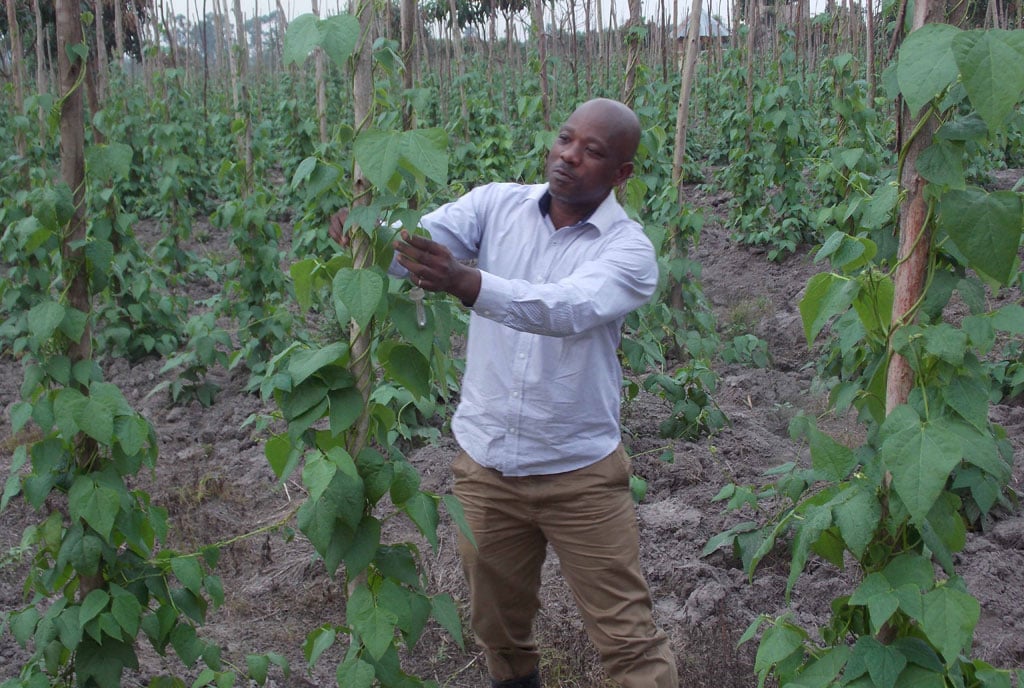Hendo turns bark cloth into a global trend

Fashion models wearing Josephine Kyomuhendo’s creations bearing the trademark bark cloth. PHOTO by edgar r. batte.
What you need to know:
- trendsetter. With the global warming effects getting worse, Josephine ‘Hendo’ Kyomuhendo’s ecofriendly and ethical designs are a welcome change.
- The designer commonly known as Hendo, her designs are not just eco-friendly but they are also driving the fashion industry’s trends writes Edgar R. Batte.
Josephine Hendo’s designs have been described as quite futuristic, fresh and inspired. Her collection titled ‘Resonance’ has earned her recognition on the international stage given its unique touch of entire design work from bark cloth material.
The Ugandan-born British designer has made her mark on the fashion industry for use of eco-friendly fabrics as much as possible, creating unique one-off pieces, from organic bark cloth, cotton, hemp, used garments such as suits, denim and wedding dresses, among others.
The graduate of London College of Fashion was inspired by her desire to challenge the culture of wastage so she did a thesis in recycling. She wanted to understand what happened to garments when an individual is done with them and gets rid of them. Part of her thesis was pursuance of knowledge in using bark cloth, which she adopted as a versatile material for its density yet soft material.
The three Rs
Her research findings influenced her motivation to create clothing that is environmentally friendly, thus three capital Rs; Reduce, Reuse and Recycle that go against the throwaway culture and promote sustainability.
“The fashion industry is the second most polluting industry in the world at present; from pesticides, insecticides, amount of water used, toxins, et cetera. I am trying to reduce the fashion industry’s impact on the environment,” she further explains.
Research done on the issue shows there are real financial and environmental benefits to be reaped from valuing our clothes more. By building on and encouraging the innovation already undertaken by collectors, re-processors, charities, retailers and local authorities, we can help protect precious resources, and save billions in the process.
In effect, she is practicing sustainable fashion which she explains is a growing design philosophy and trend of sustainability to create a system which can be supported indefinitely in terms of environmental and social responsibility.
Sustaining the community
To facilitate her design process, Hendo works with tree farmers of the mutuba (Ficus natalensis) tree from which bark cloth is harvested. The farmers are united in a group called Bukomansimbi Organic Tree Farmers Association (BOTFA).
According to United Nations Educational, Scientific and Cultural, Organisation, bark cloth is harvested during the wet season and then, in a long and strenuous process, beaten with different types of wooden mallets to give it a soft and fine texture and an even terracotta colour. Bark cloth making is an ancient craft of the Baganda.
She first contacted the tree farmers ahead of her fashion wear launch in 2014 for the first ever B2TR, followed by a visit to Bukomansimbi in 2015, which was featured on CNN on Inside Africa. She deals directly with farmers, which has sustained her increased volumes of sale.
“I also get to encourage them to plant more trees through the ‘Bark to The Roots Initiative’ (B2TR), one million mutuba tree planting campaign, thus helping save a heritage and environment as the mutuba tree is crucial to the eco-system where it is grown,” she adds.
The designer chose to work with bark cloth because it is organic and it is sustainable since she can harvest from the same tree for more than 60 years.
She also gets to know exactly who made the bark cloth and from which tree and where the bark cloth came from as well as the harvester.
She adds: “I get to take their story to all the places I get my work shown. Currently, there are six locations around the world where my work is on display, that is Detroit, Cologne, Stockholm, Exeter, Loss Angeles and Kampala.”
Hendo’s organic and one of a kind artistic creations are popular at international exhibitions and she is a regular exhibitor in international museums or institutions. She works with up to 10 tree farmers on a given project, all under the BOTFA community. She runs a fashion design business under the José Hendo label, which she established in 2008.
At the moment, she is working on a new collection called ‘Signs of The Now, which is part of a huge exhibition at the National Trust Killerton National Trust, a luxurious 75-year-old showcase house where global names have and are currently showcasing alongside the Ugandan-born designer.
“It is an honour being chosen to have my work on display at a National Trust heritage setting. When I think of all those endless hours of work that goes into any of my garments, getting to share them with a wide audience is amazing. It validates my work to no end,” she explains.
Most popular
Among her works are two garments that have drawn a lot of attention, one from a previous showcase dubbed ‘Resonance Collection’. The creation which is entirely made out of bark cloth, with no zips and no buttons. It is also totally biodegradable.
The other piece is from the exhibition titled ‘Contact Deep Collection’, also made from bark cloth with some eol lining.
Her collection titled ‘Resonance’ has earned her recognition on the international stage given its unique touch of entire design work from bark cloth material.
“Hendo’s wearable art may be worn upside down, collapsed, unfurled, shapes created and changed with each wearing and with each wearer by ingenious pulley system of strings and loops (natural materials, of course), hidden or aesthetically incorporated into the designs,” she expounds.
Some of her career highlights include her solo showcase at the London fashion week in 2014, featuring at Kampala Fashion Week and being a member of the 500, Ethical Fashion Forum and Centre of Sustainable fashion.




